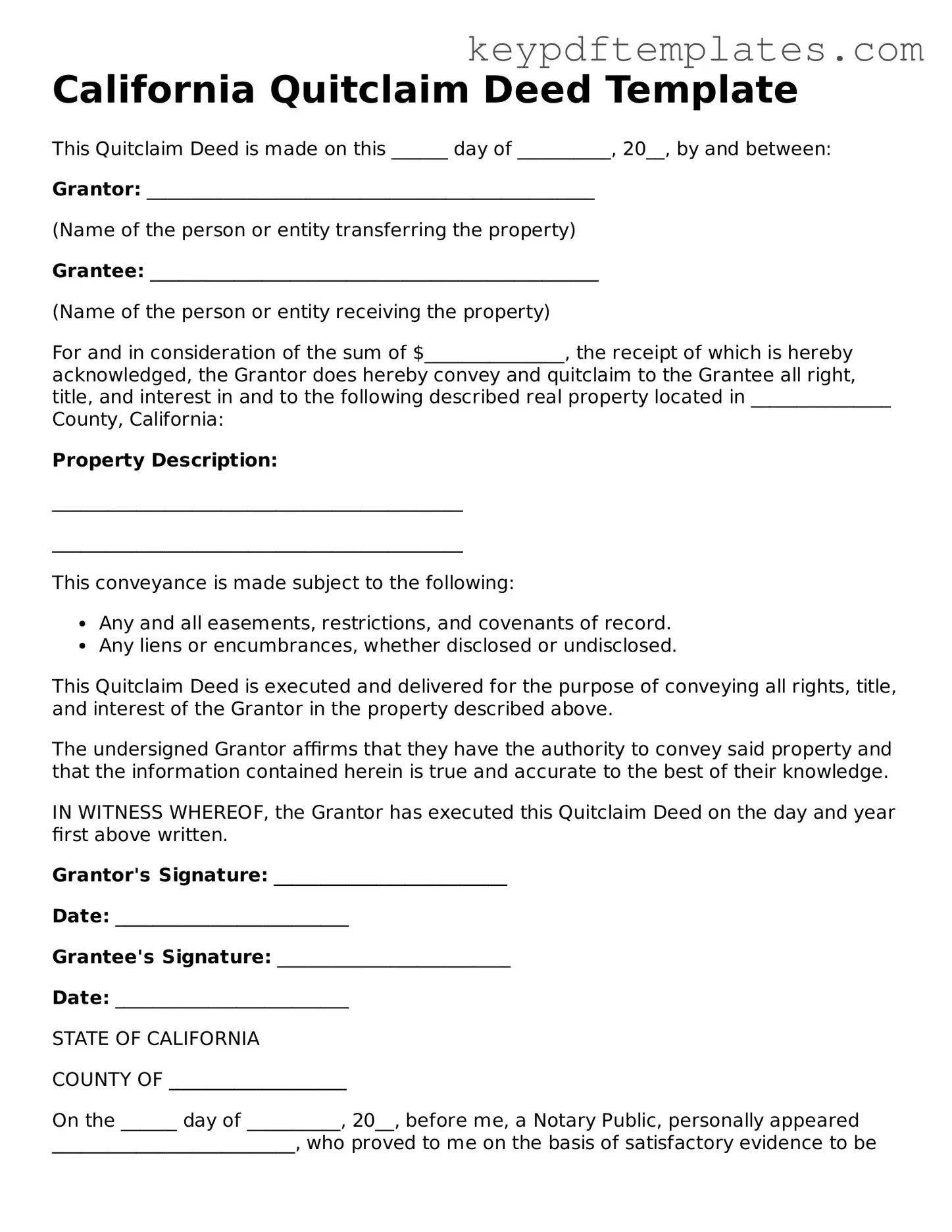Legal Quitclaim Deed Document for the State of California
A California Quitclaim Deed is a legal document that allows a property owner to transfer their interest in a property to another person without making any guarantees about the title. This form is often used in situations where the parties know each other, such as family transfers or divorce settlements. Understanding how to properly complete and file this form can simplify the process of transferring property ownership.
Modify Document Online
